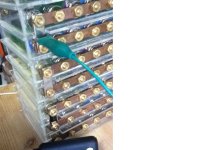Okami said:
We all know that in general if you keep the cells at max voltage it is no good in long run.. so recommended is actually at around 3.9v or below that.. So if you really wish to store for long time.. 3.8v might as well be your point..
Yes, it makes sense.... But I ask the question because in my case, I'm doing lots of testing on slightly used cells (Makita VTC4), testing ONE cell at a time for capacity (i want to capacity match the cells in the 14P10S pack I want to build)... I'm doing single cell capacity testing with a Foxnovo 4S digital charger (see pic 1 below).
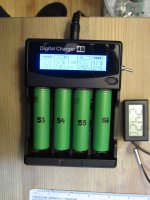
The thing that sucks with the Foxnovo 4S charger is that, as soon as the capacity test discharge cycle finishes for one cell, the charger automatically restarts the recharges cycle up to 4.20 Volts for that cell. So for example when Cell #1 finishes discharge cycle at 12:00 it then automatically engages into recharge cycle at that precise moment... then Cell #2 at 12:21 then cell #4 at 13:01 then cell #3 at 13:02... (times varies from cells to cells). So I cannot really stop them all at the exact same State of reCharge (in mAh) or the exact same voltage to just put them to storage (unless fully charged, which is 4.205V ± 0.016V at 95% confidence interval (n = 85)). I can't just stay in front of the charger, waiting for each cell to reach 1037 mAh (50%SOC), then pulling out each cell one by one at different moments of the day... Not practical ! So I just let them recharge completely to 4.20V. But I don't want to store them at 4.20V for two months. So I found a solution.
I have 290 cells to test, that will take me two months! And i can only test in batches of 4... In my case consistant reproductible SoC is important because I also want to test each cell with load testing for DC-IR determination, and also, I'm using very high drain/low IR cells,... So when I will parallel cells to make battery pack, if there is a significant voltage difference before paralleling cells, I could damage some cells. For exemple, if I add one unbalanced cell resting at 4.100V (20 mOhms) to a string of 9 paralleled cells sitting at 4.200 V (2.2 mOhms) to make my battery 10P, then there will suddently be 45 AMPS dumped in the one unbalanced cell sitting at the lower voltage (4.100 V). One cell "charging" at 45 amps when the manufacturer's specified max charge rate is known to be 4 amps/cell maximum is certainely not a good thing !
So I need reproducible conditions 1) to make DCIR testing in same conditions, and 2) to parallel my cells without damaging them (the VTC4 are low internal resistance : 12 mOhm impedance at 1kHz AC or around 20 mOhms DC resistance).
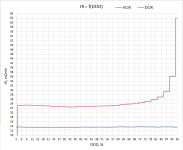
To minimise capacity loss of my Sony VTC4 NMC cells, I wanted to discharge them to around 50% SoC before storing them, then I can capacity test some more cells....
Why 50% SoC ? well here's why (see Pic 2).
View attachment 18
And in my case I determined that, at least at very low current draw of 0.2C (this is the closest simulation I could find to the unloaded "float voltage" conditions), 50% SoC is 3.65 Volts (or 1037mAh/2075 mAh @ 0.2C from 4.20
to 3.00V discharge cycling) according to this graph :
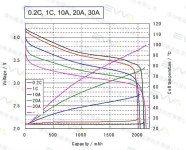
So what I did is one afternoon, I took all my capacity tested cells, sitting at around 4.20 volts, and I checked their voltage precisely with one CellLog 8M device...
My "precison" voltage tests results with the CellLogs8M are here in column "T" of this Excel sheet :
View attachment Makita VTC4 cells from doctorbass.xlsx
Then I made groups for different cell voltage :
Group #1 : 4.213V
Group #2 : 4.209 V
Group #3 : 4.207 V
Group #4 : 4.204 V
[...]
Group #13 : 4.179V
Then I used some spring modules that I fabricated myself to put all cells in one group in parallel. I call it
« The Matador Spring-loaded Module » 8)

:
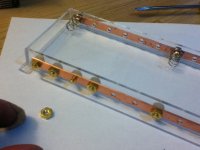


Then I used a dummy load of around 0.5 to 0.6 amps and another optional, but faster, dummy load at around 4 amps (to discharge Group #1 sitting at 4.213V) while monitoring voltage slowly going down with my CellLog 8M . As soon as Group #1 was discharged to the exact same voltage as the Group #2 (4.209V), I then paralled Group #1 with Group #2. I then continued discharge while still monitoring voltage. As soon as Merged "Group #1-2" reached voltage of Group #3, I added Group #3 in parallel connection. And so on and so forth, parallel adding more and more Groups with lower voltages until reaching last Group #13 with the lowest voltage. I did this for 130 cells yet. Lastly Merged "Group #1-2-3-4-5-6-7-8-9-10-11-12-13" was siting at 4.179V IIRC.
When all my 130 cells were finally paralled but still sitting at around 99.5% SoC. I decided to discharge them to 50% SoC (I think 3.65V for my type of cell) and put them to storage (While still being paralled so they stay ultra well balanced between them). It looks like this :
Paralleled groups :

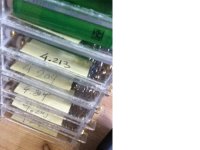
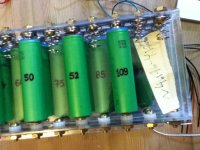
My homemade parallel connection bussbars : Flattened 1/4 inch copper pipe with hammer, drilled holes, sanded with wetsandpaper, nickel plated the copper with nickel acetate ! Still shiny (unlike bare copper wich tarnishes with time) !
View attachment 5
Storage voltage of 130 cells sitting in parallel :

My dummy load setup (using halogen lamp):

a) Just using the 12V20W Halogen bulb as the dummy gives me 0.54A load @3.651 V.

b) when i use the complete light as dummy load it pulls 3.84A @ 3.650V for faster discharge time ( Bulb dissipates 2W in this setting but it's paralleled with the lamp's transformer coil which dissipates 9.3W here (3.30 A @ 3.650V) ). But I dont let the coil on for too long as it gest hot after one hour.... I'm afraid varnish will end up melting, shorting the coil (and possibly making low amp short to my battery making the wires melt).

Well long story short, I now have balanced 130 VTC4 cells to storage voltage (3.652V@rest).
When I finish up capacity testing of more Makita pack I have to tear up (i'll reach 290 cells), i can then go on and do some DC Internal resistance testing... to match cells by resistance too !
Matador
PS : In case anybody want to know how I made the matador modules... It was initially inteded to be used as a solderless battery : https://endless-sphere.com/forums/viewtopic.php?f=14&t=57810&start=150#p1213147
Few more pics of that old battery just for nostaliga and sharing (1 picture is a thousoud words) :
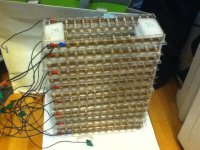 View attachment 1
View attachment 2
View attachment 1
View attachment 2















